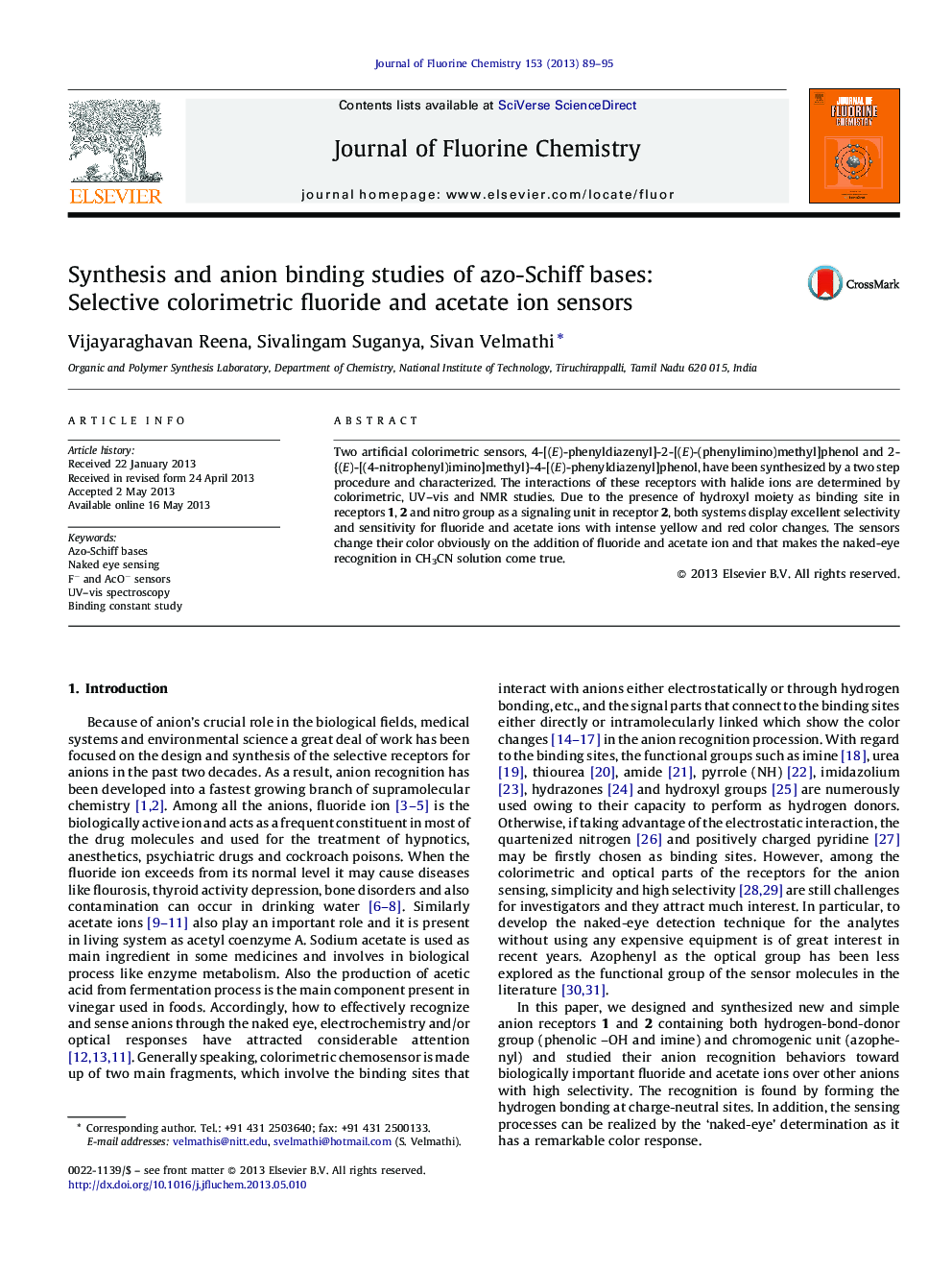| Article ID | Journal | Published Year | Pages | File Type |
|---|---|---|---|---|
| 1314423 | Journal of Fluorine Chemistry | 2013 | 7 Pages |
•Receptors 1 and 2 have been synthesized by a two step procedure and characterized.•Receptors have azo as the signaling unit and hydroxyl group as the binding unit.•Selectively senses fluoride and acetate over other halide ions in stoichiometry of 1:1.
Two artificial colorimetric sensors, 4-[(E)-phenyldiazenyl]-2-[(E)-(phenylimino)methyl]phenol and 2-{(E)-[(4-nitrophenyl)imino]methyl}-4-[(E)-phenyldiazenyl]phenol, have been synthesized by a two step procedure and characterized. The interactions of these receptors with halide ions are determined by colorimetric, UV–vis and NMR studies. Due to the presence of hydroxyl moiety as binding site in receptors 1, 2 and nitro group as a signaling unit in receptor 2, both systems display excellent selectivity and sensitivity for fluoride and acetate ions with intense yellow and red color changes. The sensors change their color obviously on the addition of fluoride and acetate ion and that makes the naked-eye recognition in CH3CN solution come true.
Graphical abstractTwo artificial colorimetric sensors, 4-[(E)-phenyldiazenyl]-2-[(E)-(phenylimino)methyl]phenol and 2-{(E)-[(4-nitrophenyl)imino]methyl}-4-[(E)-phenyldiazenyl]phenol, have been synthesized by a two step procedure and characterized. The interactions of these receptors with anions are determined by colorimetric, UV–vis and NMR studies. Due to the presence of hydroxyl moiety as binding site in receptors 1, 2 and nitro group as a signaling unit in receptor 2, both systems display excellent selectivity and sensitivity for fluoride and acetate ions with intense yellow and red color changes. The sensors change their color obviously on the addition of fluoride and acetate ion and that makes the naked-eye recognition in CH3CN solution come true.Figure optionsDownload full-size imageDownload as PowerPoint slide
